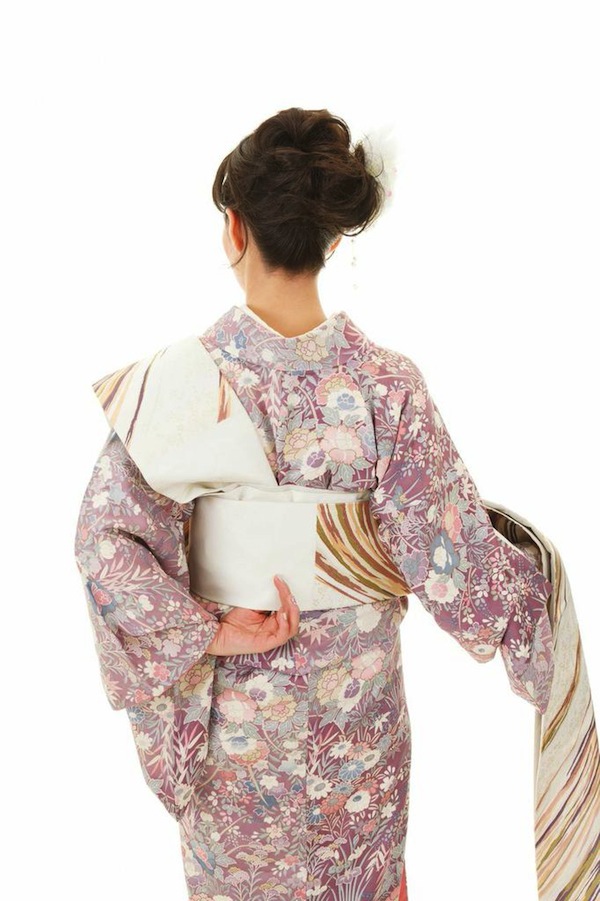
Tsuno-Dashi
When you say tsuno-dashi now, it refers to a casual way of knotting Nagoya obi which goes with tsumugi (pongee) or komon (fine pattern). It is popular for its refined way of knotting. In fact, tsuno-dashi has been long around even before the otaiko-musubi (drum knot), which is currently more major. However, tsuno-dashi in old times was slightly different from the current one in terms of its way of knotting. What is common between the two is how the tips of obi from both sides of the part called otaiko is shaped. That shape that you see is called “tsuno”, and this way of knotting the obi is called “tsuno-dashi”. Now, tsuno-dashi are made using obijime (decorative string) and obiage (obi bustle). In old times, obi were not wrapped completely. The tip of tare (the edge of obi) was left under obi, pulled through halfway, made into a ring and hung.
This method of knotting obi needs no obijime or obiage, but but it is too short for current Nagoya obi and too long for fukuro obi (double-woven obi). When Nagoya obi and fukuro obi started being used widely for otaiko-musubi, tsuno-dashi evolved too so to adapt these obi. As a result, the length that was suitable for old tsuno-dashi is no longer in use. There is this method of knotting obi called Ginza musubi which is like tsuno-dashi. However, the difference between “Nagoya obi’s tsuno-dashi” and “Ginza musubi” is not clear, and different people have different opinions about it.
